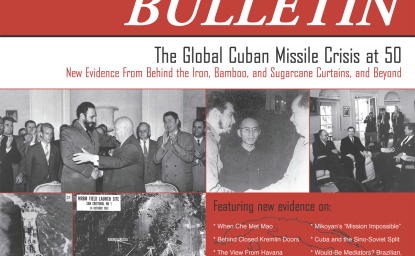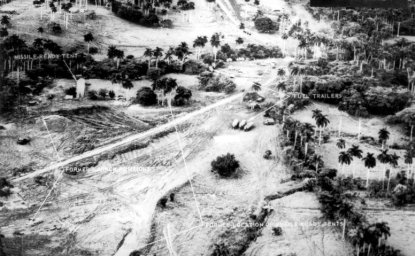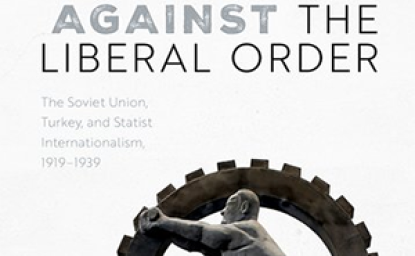North Korea and the Cuban Missile Crisis




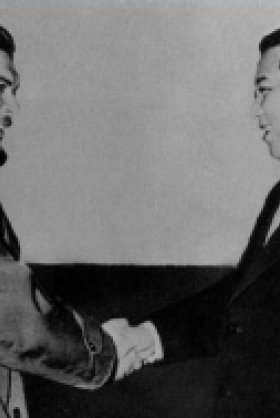
NKIDP e-Dossier no. 12, "The Cuban Missile Crisis and the Origins of North Korea’s Policy of Self-Reliance in National Defense," is introduced by James F. Person and features 6 translated documents which demonstrate how the Cuban Missile Crisis transformed North Korea’s relations with Moscow and Beijing and nudged the country down a path of unsustainable military buildup that, in part, resulted in a nuclear weapons program and was responsible for the country’s economic difficulties in later decades.
***
The Cuban Missile Crisis and the Origins of North Korea’s Policy of Self-Reliance in National Defense
Introduction by James F. Person
The trajectory of North Korea’s foreign relations and economic and military planning dramatically shifted in the early 1960s in response to two events. The first was a May 1961 coup d’état in South Korea that brought to power an anti-communist military junta led by General Park Chung Hee. The second event occurred much further from Korea’s borders—thousands of miles away on an island nation in the Caribbean. Combined, the Park Chung Hee coup d’état and the Cuban Missile Crisis transformed North Korea’s relations with Moscow and Beijing and nudged the country down a path of unsustainable military buildup that, in part, resulted in a nuclear weapons program and was responsible for the country’s economic difficulties in later decades.
North Korean leaders greeted the 1960s with optimism. The country continued its phoenix-like rise from the ashes of the devastating Korean War (1950-1953) by successfully completing, ahead of schedule, a Three-Year Plan for national reconstruction and a Five-Year Plan for comprehensive industrialization. Premier Kim Il Sung had also survived the most serious political challenge of his long tenure in 1956.[1] The toll of the social change at breakneck speeds that accompanied North Korea’s post-war economic and political developments had not gone entirely unnoticed, and the leadership of the country had designated 1960 as a “buffer year” during which the pace of development would be slowed down before launching into an ambitious Seven-Year Plan. [2] Conditions on the divided peninsula also appeared more favorable to North Korea. In April 1960, South Korean president Syngman Rhee was forced from office following a series of massive student led demonstrations. The North Korean leadership identified in this an opportunity for unification, and proposed the establishment of a Korean Confederation that would allow for both regimes to temporarily maintain their social systems as they transitioned to a unified system of government. [3]
All of this changed on 16 May 1961 when Park Chung Hee led a coup against the democratically elected government of President Yun Po Sun and Prime Minister Chang Myong, who had been in power for less than a year after President Syngman Rhee was forced from office. Although there was some initial confusion about Park’s political orientation, given a brief dalliance with communism, North Korea soon determined that the coup leader was in fact anti-communist. On 18 May, the Standing Committee of the ruling Korean Worker’s Party called for measures to be taken to drastically militarize the state. According to Chinese reports of the meeting, the Standing Committee decided to “enhance our vigilance, concentrate forces on strengthening national defense, and delay the original Seven-Year Plan until 1963. Otherwise economic construction and the national defense industry would be held up.” [4] North Korea began to take such measures without delay. A month after the coup, on 19 June, a North Korean diplomat in Budapest reported to the Hungarian Foreign Ministry that Pyongyang had issued an order for the army to enhance vigilance and reduce the number of workers in industry and reassign them to the national defense industry and defensive fortifications to prepare for an emergency situation.[5]
Within two months of the South Korean military coup, North Korea signed a Treaty of Friendship, Cooperation and Mutual Assistance with the Soviet Union. Within days, Pyongyang signed a similar agreement with Beijing. With the inclusion of mutual defense clauses that committed both parties to aid one another if attacked, both agreements provided North Korea with a greater sense of security.
Yet, the road to getting this agreement with the Soviet Union in particular was long and not without its challenges. The treaty with Moscow therefore did not instill in Kim Il Sung a sense of confidence in Moscow’s security commitment to the DPRK. In fact, Kim had been trying to get such an agreement from the Soviets for over two years. A few months after the withdrawal in October 1958 of the Chinese People’s Volunteer Army (which had entered North Korea in late 1950 to fight the Americans), Kim Il Sung traveled to Moscow in late January 1959 to attend the CPSU XXI Congress. During this trip, Kim proposed the signing of a mutual cooperation treaty with the Soviet Union, Pyongyang’s chief supplier of advanced weaponry and machinery. Though Khrushchev acceded to his request, and agreed to visit Pyongyang later that year to sign the agreement, for over two years, the Kremlin leader found reasons to postpone his trip. Khrushchev finally signed the agreement in July 1961 when Kim traveled to Moscow.
The North Korean leadership believed that their suspicions of Moscow’s unreliability were confirmed in October 1962 when Khrushchev “betrayed Cuba at the time of the Caribbean crisis.” [6] What the North Koreans viewed as Soviet capitulation in the face of pressure from the Kennedy Administration demonstrated that Khrushchev was more concerned about peaceful coexistence, and being, in the words of Kim Il Sung, “buddy-buddy with Eisenhower and
Kennedy” than he was in aiding smaller socialist countries that, in the eyes of the North Koreans, were vulnerable to being picked off, one by one, by the United States. [7] During a tense exchange in January 1965, North Korean Vice Premier Kim Il explained to Soviet Premier Aleksei Kosygin that as a result of the Cuban Missile Crisis, the North Korean leadership felt that it “could not count that the Soviet government would keep the obligations related to the defense of Korea it assumed in the Treaty of Friendship, Cooperation and Mutual Assistance.” [8]
This mistrust of Moscow was reinforced when the Soviets did not grant a request from Pyongyang for military aid in December 1962. In the immediate wake of the Cuban Missile Crisis, on 1 November Kim Il Sung expressed his concern to Soviet Ambassador Vasily Moskovsky that the North’s air and coastal defenses were in poor shape. Major cities, such as Pyongyang, Wonsan, Chongjin, and Hamheung, were poorly protected from air raids. He therefore requested permission to send a delegation to Moscow to discuss military aid [9] Kim requested that the Soviet Union deliver—on credit—over 100 million rubles in military aid to North Korea. Specifically, to enhance coastal defenses, he asked for submarines. For air defenses, Kim requested an unspecified number of MIG-21s and twelve surface-to-air missile batteries.[10] In a 14 November conversation with Ambassador Moskovsky, Kim Il Sung played up the threat to North Korea, remarking “I know that [First Secretary Khrushchev and Second Secretary Frol Kozlov] are no less concerned than I about the defense of the Far Eastern forward post…it provides a convenient platform for the enemy’s landing.”[11] Yet, Deputy Premier Kim Gwanghyeop’s 29 November to 5 December visit to Moscow ended in failure. Moscow would sell the weapons to Pyongyang, but not give them on credit. [12] Without delay, the North Korea regime escalated its efforts to achieve self-reliance in national defense. One week later, the Fifth Plenum of the Fourth KWP Central Committee formally adopted what it referred to as the equal emphasis policy, initially launched in the wake of the May 1961 military coup in South Korea, which called for simultaneous development of heavy industry and defense capabilities. The Plenum also declared Four Military Guidelines: to arm the entire population; to fortify the entire country; to train the entire army as a “cadre army”; and to modernize weaponry, doctrine, and tactics under the principle of self-reliance in national defense. Hungarian diplomats reported that by February 1963 “large-scale work [was] going on throughout the country; not only entrenchments but also air-raid shelters for the population [were] being built in the mountains.” [13]
This policy of keeping the country in a state of mobilization had drastic effects on the North Korean economy. As Vice Premier Kim Il would later describe, because of the lessons of the Cuban Missile Crisis, North Korea was “compelled to keep an army of 700,000 and a police force of 200,000. These huge armed forces constituted enormous expenses for the national economy of the DPRK, and this is why neither industry nor agriculture had made headway.”[14] Kim Il Sung elaborated on the tremendous economic cost to Kosygin:
We had to look for financing exclusively within our own country, and we could get it only at the expense of other sectors. I am sure I don’t have to tell you how large amounts of money it involved. That is why we are currently falling behind in completing the 7-year plan by one year, and we still need 3 to 5 years in order to fulfill the seven year plan at least in basic parameters. However, 4 years and 2 months have passed and we have fulfilled less than half of the 7-year plan’s goals.[15]
The Cuban Missile Crisis also led to a major shift in North Korea’s foreign policy orientation. Despite long-standing disagreements between Moscow and Pyongyang over North Korea’s autarkic development strategy, relations remained cordial through 1962. In the wake of the Cuban Missile Crisis, however, North Korea publicly sided with the Chinese in the Sino-Soviet split, and expressed opposition to Khrushchev’s purported revisionism, particularly his policy of peaceful coexistence with the United States. Both Pyongyang and Beijing advocated for a far more militant policy of anti-imperialist struggle.
The Soviet-North Korean rift lasted from the fall of 1962 through the end of 1964. During this period, North Korea drew closer to the People’s Republic of China than at any point in the history of Sino-DPRK relations. The fear of losing their freedom of action due to long term exclusive orientation toward the PRC eventually forced North Korean leaders to change their approach to developing international contacts with the USSR and European socialist countries. This change coincided with Khrushchev’s involuntary departure, in October 1964, from the leadership of the CPSU and USSR. In January 1965, North Korean Vice Premier Kim Il went to Moscow where he met with Kosygin. The two held very frank talks in which Kim Il revealed North Korea’s thinking on the Cuban Missile Crisis and the actions Pyongyang was forced to take in light of the perceived betrayal to the smaller countries in the socialist camp. Kim accused the Soviets of having betrayed the Cubans, and two years later the (North) Vietnamese by not responding fittingly to the August 1964 Gulf of Tonkin incident.[16]
The next month, in February 1965, while returning from a trip to Hanoi and then Beijing, Kosygin visited the DPRK where he met twice with Kim Il Sung. The North Korean leader echoed many of comments which Kim Il had made in Moscow the previous month. Kosygin defended Moscow’s response to the 1962 Cuban Missile Crisis and, turning Pyongyang’s own rhetoric on Kim, admonished the North Korean leader for not doing enough in the anti-imperialist struggle.[17] The Soviet Union, Kosygin argued, was in fact fighting imperialism. During their second conversation, Kim elaborated on the tremendous economic difficulties the DPRK faced as a result of measures to strengthen national defense that were adopted in December 1962 because of the perceived unwillingness of Moscow to live up to its security commitments to Pyongyang. The February 1965 Kosygin visit became an important catalyst of the favorable change in Pyongyang’s attitude toward the Moscow.
While the shift in North Korea’s foreign relations after the Cuban Missile Crisis was short-term and relations with Moscow once again improved, Pyongyang never abandoned its belief in bellicose anti-imperialism. Later in the 1960s, for a period of about three years, North Korea began to launch cross-border raids and engaged in other provocative acts against South Korea at a rate of nearly one a day [18] Other impacts of the Cuban Missile Crisis on North Korea were not so temporary. A careful reading of the available documentary evidence from the archives of Pyongyang’s former communist allies suggests that Kim Il Sung never fully trusted the Soviets again. Moreover, the country remained in an uninterrupted state of mobilization for decades and escalated efforts to achieve self-reliance in national defense, particularly through the acquisition of a nuclear deterrent. This contributed in part to North Korea’s eventual economic slowdown.
James F. Person is the Senior Program Associate for the History and Public Policy Program and coordinator of the North Korea International Documentation Project at the Woodrow Wilson International Center for Scholars. He is currently completing a PhD in Korean history at the George Washington University, working on a dissertation on North Korea's relations with the Soviet Union and China from 1956-1967.
[1] See James F. Person, “New Evidence on North Korea in 1956,” CWIHP Bulletin 16 (Spring 2008): 447-454.
[2] See, for example, Balazs Szalontai, Kim Il Sung in the Khrushchev Era: Soviet-DPRK Relations and the Roots of North Korean Despotism, 1953-1964 (Washington, DC: Woodrow Wilson Center Press; Stanford, CA: Stanford University Press, 2006), 138.
[3] See “New East German and Soviet Evidence on North Korean Support to South Korean Political Parties and Labor Unions,” NKIDP eDossier no. 8 (June 2012).
[4] “Contents of the 18 [May] [North] Korean Party Central [Committee] Standing Committee Meeting,” 21 May 1961, Chinese Foreign Ministry Archive, File No. 106-00581-06.
[5] Hungarian Foreign Ministry, Memorandum, 22 June 1961, “Visit of Comrade Paek Chong-won.” XIX-J-1-j Korea (Top Secret Documents), 1945-64, 3, doboz, 4/af, 003159/7/1961.
[6] Embassy of Hungary in North Korea to the Hungarian Foreign Ministry, 8 January 1965, MOL, XIX-J-1-j Korea, 1965, 73. doboz, IV-100, 001819/1965, Report
[7] Record of a conversation with the Soviet Ambassador in the DPRK Comrade V.P. Moskovsky about the negotiations between the Soviet delegation, led by the USSR Council of Ministers Chairman Kosygin, and the governing body of the Korean Workers Party, 16 February 1965, Czech Foreign Ministry Archive.
[8] Ibid.
[9] Memorandum of Conversation between Soviet Ambassador to North Korea Vasily Moskovsky and Kim Il Sung, 1 November 1962, AVPRF, Fond 0102, Opis 18, Papka 93, Delo 5, Listy 135-138.
[10] Memorandum of Conversation between Soviet Ambassador to North Korea Vasily Moskovsky and Kim Il Sung, 14 November 1962, AVPRF, Fond 0102, Opis 18, Papka 93, Delo 5, Listy 152-154.
[11] Ibid.
[12] See, for example, Szalontai, Kim Il Sung in the Khrushchev Era, 192.
[13] Report, Embassy of Hungary in North Korea to the Hungarian Foreign Ministry, 15 February 1963, XIX-J-1-j Korea, 6. Doboz, 5/d, 0011/RT/1963.
[14] Report, Embassy of Hungary in North Korea to the Hungarian Foreign Ministry, 8 January 1965, MOL, XIX-J-1-j Korea, 1965, 73. doboz, IV-100, 001819/1965.
[15] Czech Foreign Ministry Archive, Record of a conversation with the Soviet Ambassador in the DPRK Comrade V.P. Moskovsky about the negotiations between the Soviet delegation, led by the USSR Council of Ministers Chairman Kosygin, and the governing body of the Korean Workers Party, which took place at the USSR Embassy in the DPRK on 16 February 1965.
[16] Report, Embassy of Hungary in North Korea to the Hungarian Foreign Ministry, 8 January 1965, MOL, XIX-J-1-j Korea, 1965, 73. doboz, IV-100, 001819/1965.
[17] Conversation with the Soviet Ambassador, 19 February 1965, Hungarian National Archives.
[18] See Christian F. Ostermann and James F. Person, eds., Crisis and Confrontation on the Korean Peninsula, 1968-1969: A Critical Oral History (Washington, DC: Woodrow Wilson International Center for Scholars, 2011).
***
***
DOCUMENT LIST
(click document title to be redirected to the Wilson Center Digital Archive)
Author
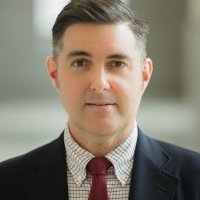
Professor of Korean Studies and Asia Programs, JHU SAIS; Senior Fellow, Foreign Policy Institute, SAIS

North Korea International Documentation Project
The North Korea International Documentation Project serves as an informational clearinghouse on North Korea for the scholarly and policymaking communities, disseminating documents on the DPRK from its former communist allies that provide valuable insight into the actions and nature of the North Korean state. Read more


Cold War International History Project
The Cold War International History Project supports the full and prompt release of historical materials by governments on all sides of the Cold War. Read more


History and Public Policy Program
A leader in making key foreign policy records accessible and fostering informed scholarship, analysis, and discussion on international affairs, past and present. Read more


Hyundai Motor-Korea Foundation Center for Korean History and Public Policy
The Center for Korean History and Public Policy was established in 2015 with the generous support of the Hyundai Motor Company and the Korea Foundation to provide a coherent, long-term platform for improving historical understanding of Korea and informing the public policy debate on the Korean peninsula in the United States and beyond. Read more

